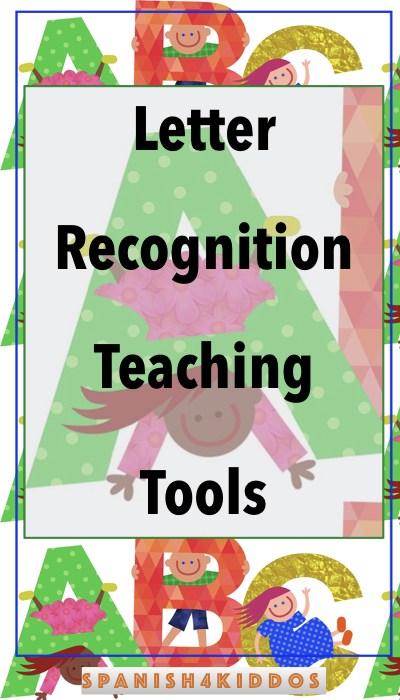
Letter recognition impacts the learning of many children in the classroom. Recognizing letters influences the young readers to evaluate and correlate sounds with letters meanwhile affecting reading skills. Teachers know students need a solid foundation of letters and phonics.
As much as reading is necessary for life, students need a basis to learn the different mechanics of letter identification. Teaching the alphabet before interpretation is widespread acceptance. So, many educators embark on developing curriculums to teach the alphabet first before introducing sounds and sight words.
Logically, letter recognition takes a path of identification and phoneme awareness. Children, on the other hand, learn about letters and sounds when teachers introduce patterns associating prior knowledge.
Letter recognition in teaching how to read
When teaching letter recognition, a distinct approach is to begin introducing the alphabet. While this is a logical approach, letter recognition for active reading uses other components of learning how to read. Children begin to recognize sounds and patterns even before they read. Early literacy starts when children begin to make noises.
Decoding skills foster the reading ability of many children. Readers identify the print patterns and recognize the letters. So, letter recognition and phonics make up the components of reading. Traditionally, educators use visual letter aids in classrooms and posters.
However, children are efficient readers when they associate mentally with the sound and the print of the letter. A correlation between teaching letter and noise seems an easy task. However, the factors behind teaching letter recognition and phonics generate an educational journey that many teachers battle in the classroom.
Since children connect prior knowledge to new sounds and letters, apparently, they want to make the same predictions in reading. As students, children interact with various letter sounds and identification.
Phonics correlation in letter recognition
At this point, young readers initiate a new perspective about phonics and letters. Many letter sounds begin to have different pronunciation and meaning. Especially when vowels consists of inconsistent sounds, teachers take notice to clear misconceptions. Using anchor charts to show different vowel teams, consonant-vowel-consonant patterns, spelling, and vowel flexing, teachers encourage students to pay attention to more than letter recognition.
Including using vocabulary journals and pictures motivates students to make a correlation between letter sounds and representations. In addition to vowel sounds, teaching digraphs and blends are useful ways to clear misconceptions of letter recognition and phonics. Digraphs instruction introduces a combination of an individual phoneme in vowels pairs or vowel teams.
However, blends use a sequential order of the letter sounds individually appearing as the pronunciation flows all together. Surrounded by these reading techniques, young readers enjoy reading in more remarkable ways.


Letter recognition games and ideas
Interactive games are absolute favorites of many young children. What is not to love when learning is a fun game of letters and words in reading? Perhaps, a fun way to learn is learning while playing. So, many games and activities help teachers embrace letter recognition instruction.
While reading out loud is the most effective manner to approach letter recognition, identification of letters goes beyond that. Whether you are reading a story time aloud or using an audiobook, students learn new vocabulary and sound patterns. Reading initiates the curiosity to learn about many different topics in everyday life including school and home.
Opening a book to read out loud enriches the phonological awareness in children by enhancing new vowel sounds and consonants patterns. Reading does not have to stop when the last page finishes. As such, open the discussion between students and yourself by asking different open-ended questions.
In this way, students make predictions about the context, connect the characters to the story, and anticipate future aspects of the story. Other ways to enhance letter recognition while reading is creating picture journals. Students create All About Me journals to add vocabulary words and phrases to describe students' lifestyle, likes, dislikes and objects.
What a fun way to associate letter recognition with prior knowledge in meaningful storybook students keep forever. Hidden picture books, clue word games, and themes are also ways to boost letter recognition and involve more reading in the classroom. While many of the activities generate enthusiasm to learn, these activities need specific benchmark goals to measure the success of young readers.
Introduction of letter recognition at home
As many educators know, learning begins at home. Young readers continue reading for life. So, parents enhance the reading skills students acquire at school by implementing consistent techniques. As mentioned before, reading out loud encourages young readers to learn in the classroom and at home.
Parents also help older siblings in reading to younger ones and foster the appreciation for reading in the family. Besides reading individually, parents can use different types of cost-effective activities. Families can use a simple popsicle game of using the beginning letter of a word to match words in a favorite book.
Also, write letters of words that rhyme and have children find them around the house to see how many they can find. More ways to enhance letter recognition is to use matching cards and rhyming alphabet songs. Use upper and lower case of letters and write them on note cards or pieces of papers. Then, ask the children to match the letters. Next, mix the cards as often as needed until mastery.
Another fun way is to use a catchy alphabet song. Utilize a shaker or create one using a plastic Easter egg and fill it with beans. Play the song and encourage children to listen to the letter you point on a card or paper. Then, teach the children to shake the object when they hear the letter. You can also put magnetic, paper, or foam letters inside plastic containers like Easter eggs and hide them in a scavenger hunt.
Alphabet bingo, soup, and stamping of letter games are fun activities to motivate young readers to learn letter recognition. Aside from interactive games to enhance letter recognition, rhyming activities stimulate children to more than learning fun rhymes.
Effects of rhyming in phonics
Letter recognition does not stop with reading and fun alphabet games; nursery rhymes also encourage children to acquire more vocabulary and new letter sounds. While children under the age of six can attain more than 60,000 words, vocabulary is limitless at this stage. Rhyming is a reading skill that encourages children to associate sounds with letters.
As mentioned before, letter sounds come in different ways. Whether sounds are part of digraphs or blends, the rhyming boosts that learning of vowel and consonant combinations. Familiar nursery rhymes like Mary Had a Little Lamb or Humpty Dumpty reinforce memory skills to acquire new phonics and increase vocabulary.
Aside from memorization skills, nursery rhymes sharpen language techniques and prepare children for storytelling reading. While reading is a fundamental part of young learners, acquiring the methods to read entails more than learning the alphabet.

